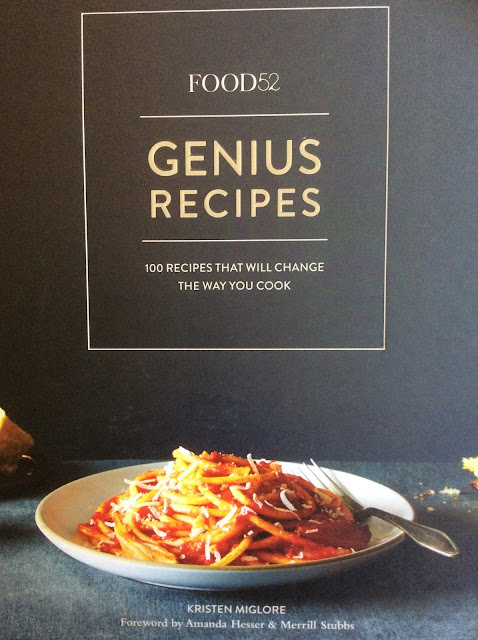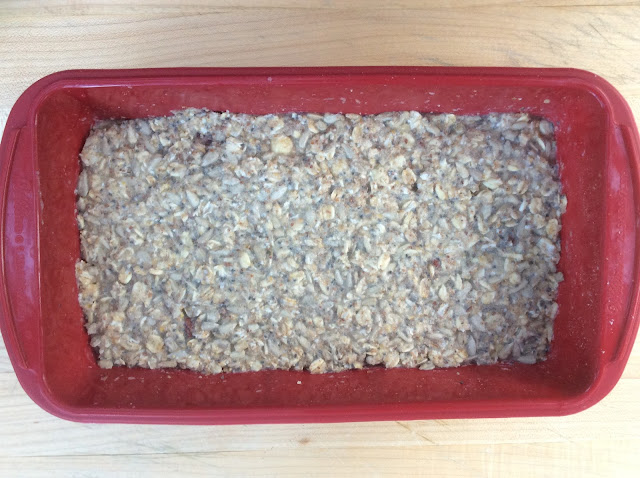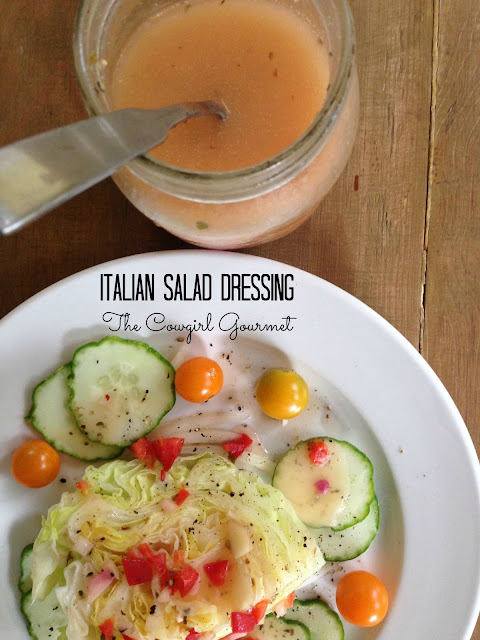How to Easily Change Your Life
The year 2007 was a zen year for me. It was the year I embraced yoga and bread making. I had sort of retired and felt the calling to just "be" for a year. And so I did. This 365-day experiment started with a yoga class on January 1 and as many classes thereafter as I could fit into my schedule along with a sourdough starter a neighbor's friend shared with me. The end result proved to be life-changing.
The word patience--much less the concept of being patient--was not in my vocabulary nor was the ability to "be" part of my life at the time. Inching closer to the big 4-0 that year, I knew I needed to evolve. Bread-making and yoga were my catalysts for change and I am forever grateful.
I owned the "project" as if it were a job. This meant keeping a bread baking journal and reading up on breadmaking from experts such as Nancy Silverton. In the journal, I wrote down every recipe I made, the ingredients, the humidity, whether I sprayed the oven or not, how long I let the bread rise, how many times, scoring styles and so many more details. This strategic note taking allowed me to create a comparison along the way as I learned how to conquer that elusive yet crispy loaf of bread that sliced into airy, pillows of perfection. It was a test of patience, creativity, dedication and culinary prowess in the science of breadmaking.
From conquering the traditional chocolate babka to nailing the morning favorite cinnamon-raisin swirl bread, I loved this adventure. In addition to becoming quite adept at creating desirable and seasonal flavor combinations, baking new types of bread every week also brought me closer to my paternal grandmother, cousins and neighbors as I always needed hungry friends to gift freshly made bread, while yoga gave me the ability to focus, breathe and summon the good in and breathe the evil out.
Fast forward almost 10 years.
Though breadmaking is no longer part of my gluten-free and Paleo world, fortunately, the residual zen experience of creating a dough, lovingly kneading it, patiently letting it rise and then baking it into a crispy, golden loaf of goodness still lives within me. As does the practice of yoga.
Having had Sarah Britton's Life-Changing Loaf (of the My New Roots food blog) speak to me many times over the last few years (I have the printed recipe in my stack of "to make" recipes to prove it), it wasn't until I checked out the Food52 Genius recipe book from the library that I was catapulted to action.
Actually, it was David who cajoled me to make this bread and now that I have, I am wondering, what in the hell took me so long to embrace this life-changing loaf? The name alone should have been enough to capture my attention. But it didn't. And that's the way life is, too. Sometimes we see things every day but it doesn't impact us until we are ready. And I am now officially ready.
This bread requires no sourdough starter, no wheat flour, no kneading, no big machines, no dishes to dirty and no complicated process. Just stir together some oats, nuts and seeds in a loaf pan, mix with a combination of water, coconut oil and a touch of maple syrup and salt, stir well to soak up the liquid and let it sit until you are ready to pop it into the oven.
While we tend to use the words "life-changing" loosely, this is not one of those times. For people who don't, won't and can't eat bread, this is definitely a life-changing recipe. And the fact that it is so utterly simple to make means you can enjoy this life-changing nourishment whenever you want.
Buen provecho!
Life-Changing Loaf
The Cowgirl Gourmet thanks Sarah Britton of My New Roots for this fabulous and, yes, life-changing recipe
Print recipe
If you love bread, but dread the time-consuming process a super high-quality bread requires or fear the bread gluten monster, consider this recipe your new best friend. It requires no wheat flour, no sourdough starter, no kneading and no heavy equipment. This recipe is so easy anyone can make it. Just measure, stir and bake. Slather a piece of this bread toasted with avocado, smoked salmon and cream cheese or almond butter and jelly to get your day started with a punch of nutrition and flavor.
Makes 1 loaf
1 cup sunflower seeds
1/2 cup flax seeds
1/2 cup hazelnuts or almonds
1 1/2 cups certified gluten-free oats
2 tablespoons chia seeds
4 tablespoons psyllium seed husks (use only 3 tablespoons if using psyllium husk powder)
3 tablespoons melted coconut oil or ghee
1 tablespoon maple syrup
1 1/2 cups water
1 teaspoon kosher or sea salt
In a flexible, silicone loaf pan or metal loaf pan lined with parchment paper, add all of the dry ingredients and stir to mix everything up well.
In a big measuring cup, add the melted oil, maple syrup, water and salt and whisk well to combine. Add the liquid to the dry ingredients and stir for about a minute until the liquid is completely absorbed and the dough is very thick. (If the dough is too thick, add one or two teaspoons of water until the dough is manageable.)
Once the liquid is absorbed, smooth the top of the bread with an off-set spatula or back of a spoon.
Let the loaf pan sit on the counter for at least two hours or all day or overnight. To ensure the dough is ready, it will retain its shape even when you pull the sides of the loaf pan away from it or lift the parchment paper.
When you are ready to bake the loaf, preheat the oven to 350 degrees F.
Place loaf pan on the middle rack and bake for 20 minutes. Remove bread from the loaf pan and place it upside-down directly on the rack and bake another 30-40 minutes. Bread is done when it sounds hollow when tapped.
Let cool completely before slicing.
Store bread in a tightly sealed container for up to five days or freeze it. To make it easy, slice before freezing and then you can have a piece of toast whenever you want.
The word patience--much less the concept of being patient--was not in my vocabulary nor was the ability to "be" part of my life at the time. Inching closer to the big 4-0 that year, I knew I needed to evolve. Bread-making and yoga were my catalysts for change and I am forever grateful.
I owned the "project" as if it were a job. This meant keeping a bread baking journal and reading up on breadmaking from experts such as Nancy Silverton. In the journal, I wrote down every recipe I made, the ingredients, the humidity, whether I sprayed the oven or not, how long I let the bread rise, how many times, scoring styles and so many more details. This strategic note taking allowed me to create a comparison along the way as I learned how to conquer that elusive yet crispy loaf of bread that sliced into airy, pillows of perfection. It was a test of patience, creativity, dedication and culinary prowess in the science of breadmaking.
From conquering the traditional chocolate babka to nailing the morning favorite cinnamon-raisin swirl bread, I loved this adventure. In addition to becoming quite adept at creating desirable and seasonal flavor combinations, baking new types of bread every week also brought me closer to my paternal grandmother, cousins and neighbors as I always needed hungry friends to gift freshly made bread, while yoga gave me the ability to focus, breathe and summon the good in and breathe the evil out.
Fast forward almost 10 years.
Though breadmaking is no longer part of my gluten-free and Paleo world, fortunately, the residual zen experience of creating a dough, lovingly kneading it, patiently letting it rise and then baking it into a crispy, golden loaf of goodness still lives within me. As does the practice of yoga.
Having had Sarah Britton's Life-Changing Loaf (of the My New Roots food blog) speak to me many times over the last few years (I have the printed recipe in my stack of "to make" recipes to prove it), it wasn't until I checked out the Food52 Genius recipe book from the library that I was catapulted to action.
Actually, it was David who cajoled me to make this bread and now that I have, I am wondering, what in the hell took me so long to embrace this life-changing loaf? The name alone should have been enough to capture my attention. But it didn't. And that's the way life is, too. Sometimes we see things every day but it doesn't impact us until we are ready. And I am now officially ready.
This bread requires no sourdough starter, no wheat flour, no kneading, no big machines, no dishes to dirty and no complicated process. Just stir together some oats, nuts and seeds in a loaf pan, mix with a combination of water, coconut oil and a touch of maple syrup and salt, stir well to soak up the liquid and let it sit until you are ready to pop it into the oven.
While we tend to use the words "life-changing" loosely, this is not one of those times. For people who don't, won't and can't eat bread, this is definitely a life-changing recipe. And the fact that it is so utterly simple to make means you can enjoy this life-changing nourishment whenever you want.
Buen provecho!
Life-Changing Loaf
The Cowgirl Gourmet thanks Sarah Britton of My New Roots for this fabulous and, yes, life-changing recipe
Print recipe
If you love bread, but dread the time-consuming process a super high-quality bread requires or fear the bread gluten monster, consider this recipe your new best friend. It requires no wheat flour, no sourdough starter, no kneading and no heavy equipment. This recipe is so easy anyone can make it. Just measure, stir and bake. Slather a piece of this bread toasted with avocado, smoked salmon and cream cheese or almond butter and jelly to get your day started with a punch of nutrition and flavor.
Makes 1 loaf
1 cup sunflower seeds
1/2 cup flax seeds
1/2 cup hazelnuts or almonds
1 1/2 cups certified gluten-free oats
2 tablespoons chia seeds
4 tablespoons psyllium seed husks (use only 3 tablespoons if using psyllium husk powder)
3 tablespoons melted coconut oil or ghee
1 tablespoon maple syrup
1 1/2 cups water
1 teaspoon kosher or sea salt
In a flexible, silicone loaf pan or metal loaf pan lined with parchment paper, add all of the dry ingredients and stir to mix everything up well.
In a big measuring cup, add the melted oil, maple syrup, water and salt and whisk well to combine. Add the liquid to the dry ingredients and stir for about a minute until the liquid is completely absorbed and the dough is very thick. (If the dough is too thick, add one or two teaspoons of water until the dough is manageable.)
Once the liquid is absorbed, smooth the top of the bread with an off-set spatula or back of a spoon.
Let the loaf pan sit on the counter for at least two hours or all day or overnight. To ensure the dough is ready, it will retain its shape even when you pull the sides of the loaf pan away from it or lift the parchment paper.
When you are ready to bake the loaf, preheat the oven to 350 degrees F.
Place loaf pan on the middle rack and bake for 20 minutes. Remove bread from the loaf pan and place it upside-down directly on the rack and bake another 30-40 minutes. Bread is done when it sounds hollow when tapped.
Let cool completely before slicing.












.JPG)

Comments